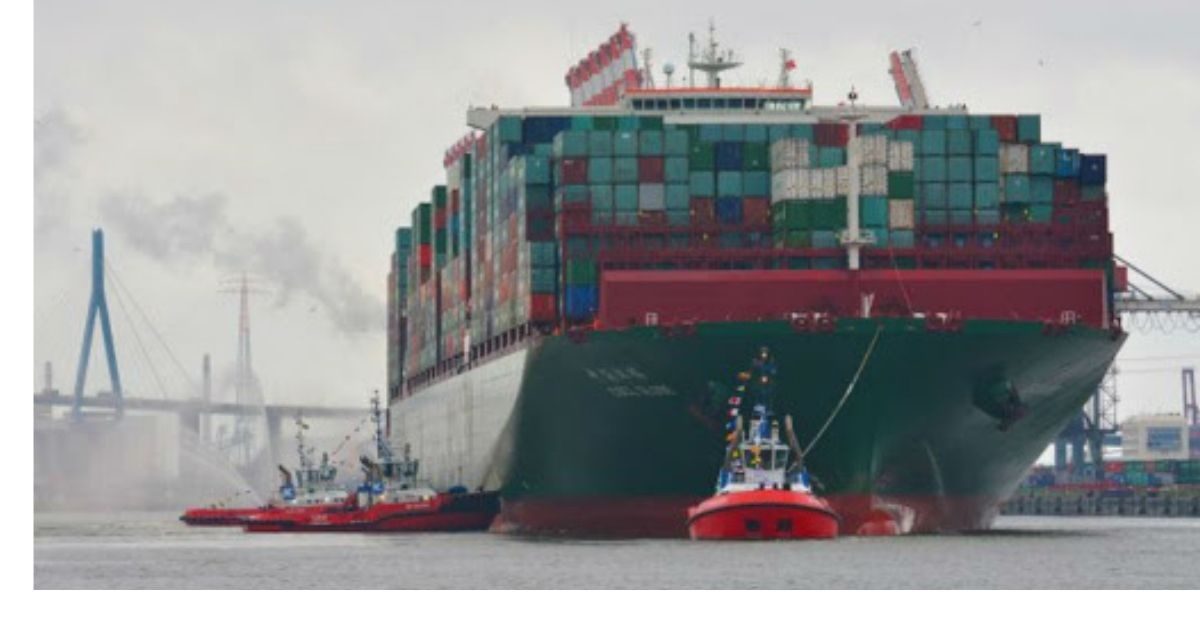Many industries that make up the world of freight have undergone tremendous change over the past several decades. Each week, FreightWaves explores the archives of American Shipper’s nearly 70-year-old collection of shipping and maritime publications to showcase interesting freight stories of long ago.
In this week’s edition, from the May 2001 issue of American Shipper (virtual pages 52-53), FreightWaves Flashback looks back 20 years ago at plans to push the envelope on containerized shipping.
Several shipping lines are close to ordering the first container ships of more than 8,000-TEU capacity, but others in the industry are warning of the associated risks.
China Shipping Container Lines is talking to the Korean shipyard Samsung Heavy Industries about orders for a series of 9,000-TEU containerships. When concluded, the orders will be for the world’s largest container ships, overtaking Maersk Sealand’s “S-class” vessels of about 8,000-TEU effective capacity.
A spokesman for the shipyard in Korea told American Shipper that negotiations are underway, following the signing of a letter of intent concerning future orders of 9,000-TEU ships.
Samsung, a shipyard that has led the development of larger post-Panamax container ships in Asia, has designed a 9,000-TEU prototype container ship with a length of 330 meters, a draft of 14.5 meters, a width of 45.6 meters and a speed of 26 knots. The width of the ship implies that it will carry 18 containers abreast, one more than the largest container ships afloat today. The vessels would be considerably wider than the 13-container-wide, 32.3-meters Panamax vessel type.
The wider vessels will require container terminals to invest in longer cranes that can work 18-container-wide vessels.
Robert Woods, group managing director of P&O Nedlloyd, recently said his company is looking at vessel designs for larger ships of up 10,000-TEU capacity.
Meanwhile, Dutch academics are continuing studies about the sustainability of introducing, by 2010, a revolutionary vessel type called the Malacca-max. The 18,000-TEU Malacca-max vessels would have the maximum size and draft to transit the Strait of Malacca in Southeast Asia (February American Shipper, pages 68-69).
Move to larger sizes
Few in the liner shipping industry today question the cost advantage of post-Panamax container ships. All the major container ship operators have built or ordered vessels of more than 5,000-TEU capacity of this type, even round-the-world operator Evergreen, which uses them mainly for its Asia/U.S. West Coast operations.
The post-Panamax ship is quickly becoming the workhorse of the Asia/Europe and Asia/U.S. West Coast trades.
According to ComPairData, the global liner shipping database, 58 of the 430 liner vessels used in the Asia/North America trade are post-Panamax container ships of more than 5,000 TEUs. In the Asia/Europe trade, 81 of the 341 vessels in this trade are bigger than 5,000 TEU. Certain ships operate in both the trans-Pacific and Asia/Europe trades as part of long “pendulum” rotations. However, by definition, all the ships employed in the booming Asia/Panama/U.S. East Coast all-water trade is of Panamax size or less.
The number of post-Panamax vessels will double over the next two years. Since 1996, the trend from 5,000-TEU to 7,000-TEU vessels has taken hold, following the introduction by Maersk Line (now Maersk Sealand) of the Regina Maersk.
Freightwaves.com







